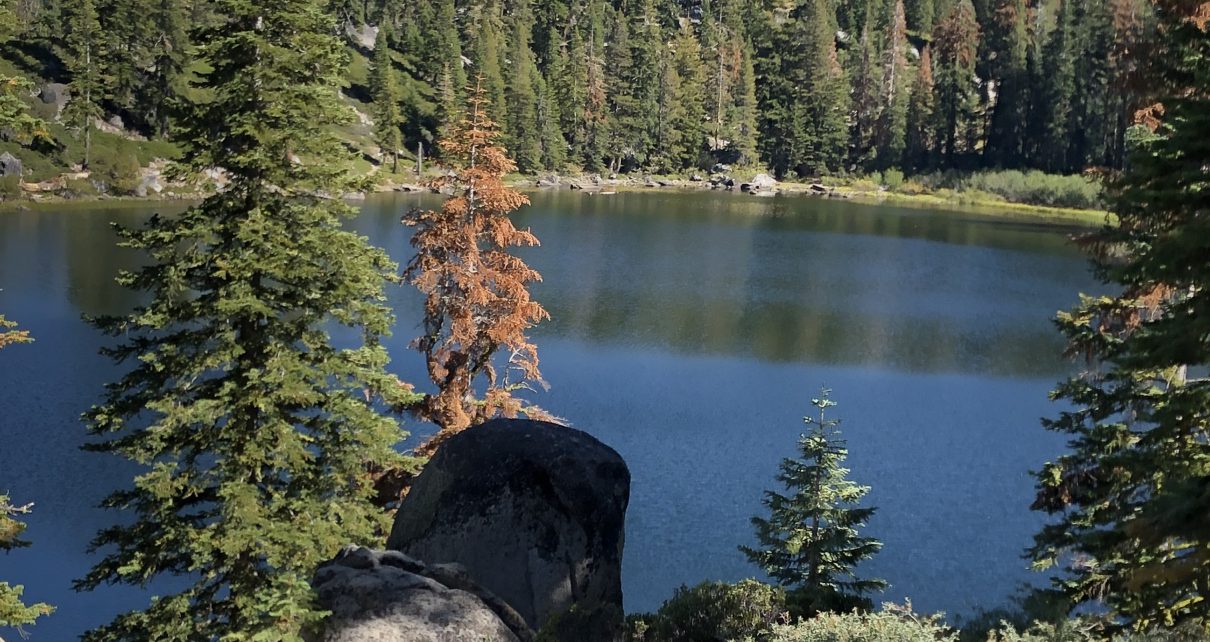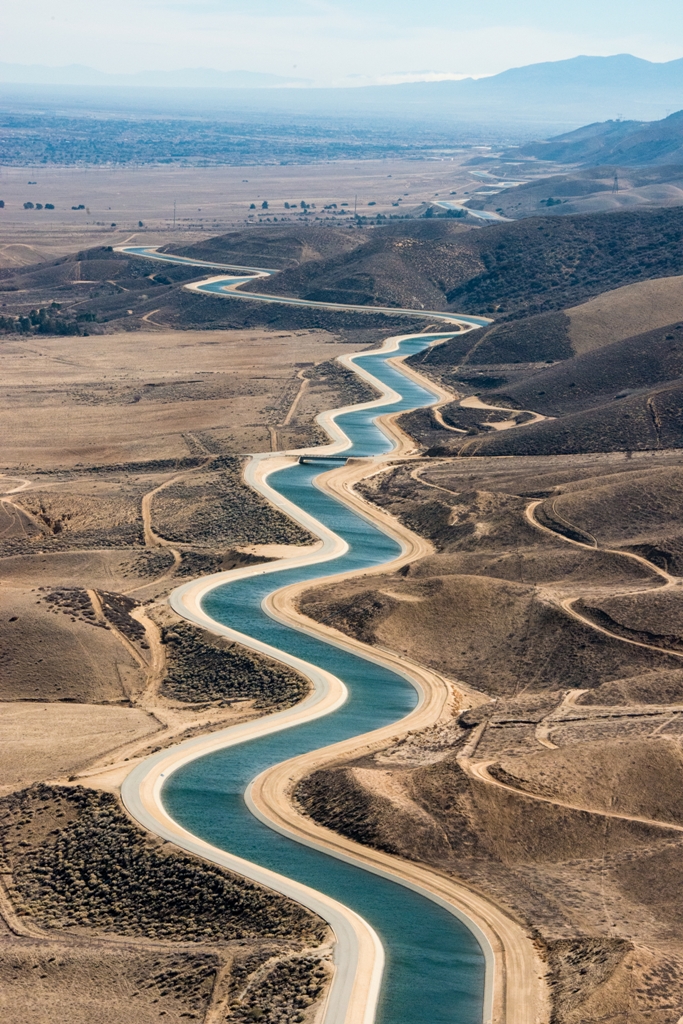
El Dorado National Forest, California. (Photo: Katy Grimes for California Globe)
Ringside: Forest Thinning Adds Millions of Acre Feet to California’s Water Supply
The incidence of superfires would drop if California’s forests were thinned and properly managed
By Edward Ring, June 6, 2024 2:45 am
 Practical solutions to California’s energy and water shortages will always have a better chance of being implemented if they adhere to the limitations placed upon them by the climate lobby. Thankfully there are numerous solutions, strategic in their impact, that would fulfill this criteria. Sadly, however, most of them remain controversial.
Practical solutions to California’s energy and water shortages will always have a better chance of being implemented if they adhere to the limitations placed upon them by the climate lobby. Thankfully there are numerous solutions, strategic in their impact, that would fulfill this criteria. Sadly, however, most of them remain controversial.
Examples of climate compliant yet controversial solutions include nuclear power, natural gas power generation with underground sequestration of the emissions, offstream reservoirs, and desalination. Another example, the subject for this week, is forest thinning.
On September 23, 2020, after another round of devastating super-fires immolated another 4.1 million acres of California’s forests, Governor Newsom announced via executive order a ban on sales of cars with internal combustion engines to take effect by 2035. Whether or not you believe automotive emissions constitute a mortal threat to the planet or not, Newsom’s edict did nothing to alleviate superfires.
The primary reason for out of control wildfires is because California’s state legislature has funded fire suppression at the same time as it has regulated timber harvesting nearly out of existence. We have become very, very good at squelching wildfires before they get started. We’ve also reduced our annual timber harvest in California from 6 billion board feet per year as recently as the 1990s to around 1.5 billion board feet in recent years. As a result, California’s forests are estimated to have tree densities that is many times what is known to be historically normal.
In past millennia, fires caused by lightning strikes routinely burned off undergrowth and a high percentage of small trees, leaving the larger trees to survive these fires. Today, trees and undergrowth are so crowded that everything is stressed. Light, soil nutrients, and water are now being shared by anywhere between 2 and 6 times (or more) as many trees and plants as these ecosystems were naturally evolved to support. Observations of excessive tree density are corroborated by numerous studies, testimony, and journalistic investigations.
This is the real reason the fires have gotten so bad. Anyone concerned about climate resiliency, or who cares about the health of our forests, or, dare we say it, who wants to preserve a human presence with homes and towns in the “urban wildland interface,” should be demanding forest thinning.
Examples of success with forest thinning is already available. When the Creek Fire tore through the forests of Fresno, Madera, and Mariposa counties, the 20,000 acres around Shaver Lake were spared. The fire engulfed an estimated 380,000 acres (580 square miles), but inflicted almost no damage in these 20,000 acres of managed forests. For decades, the forests in this area, managed by Southern California Edison to protect the watershed feeding into the 135,000 acre foot Shaver Lake reservoir, were routinely thinned via a program that included selective logging and controlled burns. Significantly, the wildlife counts in these managed forests were consistently higher than average.
This fact, that forests subject to responsible logging actually report more robust populations of wildlife including the endangered spotted owl, is rarely acknowledged. But comparisons between commercially managed forests in California’s Northern Sierra and adjacent National Forests that are off limits to logging confirm this assertion. Even clear cuts, when implemented on a multi-decade rotation and with each cut limited in area, are beneficial to wildlife. They temporarily create meadows that create forage for deer, in-turn creating food for mountain lions. These open areas also help owls and other raptors spot and feed on rodents. When the slash is furrowed along level contours, runoff is contained and percolates. Logging has come a long way. It’s time to bring it back to save the forests. That may sound counterintuitive. It’s not.
But what about water? Here is where it gets even more interesting. It turns out that forest thinning also reduces the amount of water that is immediately taken up by the roots of overcrowded trees and undergrowth and transpirated into the atmosphere. Instead, more of this water can run off into tributaries or percolate to recharge springs. How much water?
A fascinating 2011 study by experts from UC Merced, UC Berkeley, and the Environmental Defense Fund provides enough data to begin to answer that question. It reports that 60 percent of the state’s consumptive water comes in the form of Sierra runoff, and that when forest cover is reduced by 40 percent, total runoff will increase by an estimated 9 percent. California’s consumptive use of water, including urban and agricultural use, but not including diversions to maintain ecosystem health, is around 40 million acre feet per year. That means if California’s forests were thinned appropriately, 2.2 million acre feet of water (40 MAF x 60% x 9%) would be added to California’s water supply in an average year.
This is not a trivial increase, particularly since it could be realized at no expense to the taxpayer. In fact, reviving California’s timber industry would create thousands of jobs and industry profits, which would increase state tax revenues. Other benefits would include carbon sequestration as embodied within the many new lumber products, as well as lower prices for lumber which would lower the cost of new construction.
And, with apologies to engineers who might call this a “ROM” (rough order of magnitude) estimate at best, if you figure 2 acre feet of water passing through the turbines on a dam can generate one megawatt-hour of hydroelectricity, adding 2.2 million acre feet of runoff would generate another 1.1 million megawatt-hours, increasing California’s total hydroelectric output by 7.5 percent.
Finally, to mention the obvious, if California’s forests were thinned and properly managed, the incidence of superfires would drop, with no more devastated ecosystems and wildlife, destroyed property, lost lives, stupefying costs to rebuild, toxic runoff, horrific landslides, millions of tons of CO2 and particulates, and smoke choking half the state for weeks on end.
What are we waiting for? It’s all connected. If you harvest more timber, you can harvest more water.
- Ringside: The Denominators of our Prosperity – Energy and Water - January 14, 2026
- Ringside: Reversing California’s Policies of Scarcity - January 8, 2026
- Ringside: What is the Future of California’s Republican Party? - December 31, 2025




“Governor Newsom announced via executive order a ban on sales of cars with internal combustion engines to take effect by 2035.” The average age of a car is now 12.6 years. Unless EVs drop in price, EV range doubles, charging times drop big time, and California upgrades its electricity supply and distribution infrastructure, the fleet of ICE vehicles is going to get a lot older. This means that criteria pollutants (NOX, SOX, PM10, O2) are going to get a lot worse like in the 50s and 60s. These are the unintended consequences. Havana anyone.
Instead of managing the forests and thinning out trees and underbrush by timber companies, Newsom and the criminal Democrat mafia that controls the state would rather have devastating fires that burn hundreds of thousands of acres and they’ll blame it on climate change? That way they have an excuse to raise taxes and fees while putting further restrictions on public land use?
The many so-called “firenados” —- the phenomenon where fires burn so hot and high and horrifying they create their own weather systems —- that have terrified communities in CA over recent years, can only be attributed to the stubborn stupid negligence of these people. Just that. Good thing Newsom & Co. now look ridiculous when they blame “climate change.”
One-time Gov candidate and activist Michael Shellenberger had a sharp quote when he was a candidate:
“When something goes wrong Gavin Newsom looks around for someone to blame. When he can’t find anyone, he blames “climate change.”
Another brilliant and SPOT-ON analysis by Mr. Ring…
I’ve often wondered how the “greens” don’t freak out about the amount of wildfire particulate matter (actual CARBON) thrown into the atmosphere by the wildfires that California forest MIS-management allows to occur…
CD9 – It is one of the many “tells” that lets us know the “greens” don’t — and never did — care about that stuff anyway. What they really always cared about was stealing your money and putting a jackboot on your neck. By way of “green.”